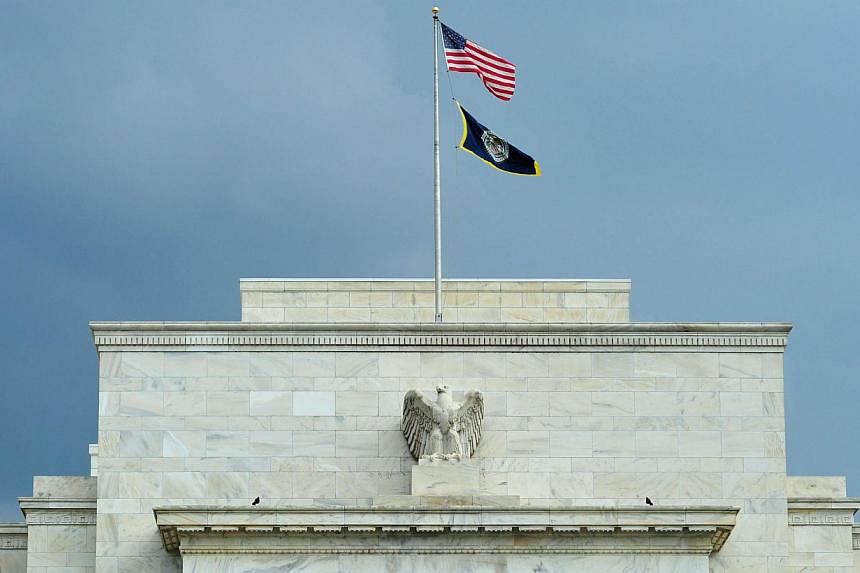The US central bank, as widely expected, announced on Wednesday (2am Thursday in Singapore) that will end its quantitative easing (QE) programme begun in 2008 that saw the Federal Reserve pump trillions of dollars into the United States economy.
1. QE is the Fed's programe of buying up a massive amount of assets in order to stimulate the US economy more than a central bank could normally do through interest rate policy. It has paused its stimulus campaign several times since the financial crisis began six years ago only to conclude that the economy needed more help.
The Fed has been gradually cutting back its third round of stimulus since last year as the US economy improved and had already flagged that QE3 would likely end this month.
2. The Fed said it was confident the US economic recovery would continue despite a global economic slowdown.
Economists said the Fed was a little bullish on the economy and unconcerned about falling inflation.
In its statement on Wednesday, the Fed said the targets for inflation and reduction in unemployment were on track: "The Committee continues to see sufficient underlying strength in the broader economy to support ongoing progress toward maximum employment in a context of price stability."
It said that while inflation in the near term will probably be held down by lower energy prices, it repeated language from its September statement that "the likelihood of inflation running persistently below 2 percent has diminished somewhat."
The Fed also upgraded its assessment of the US job market's performance. Previous policy statements have referred to "significant underutilization of labor resources". Wednesday's statement left out the word "significant".
Brian Jacobsen, strategist at Wells Fargo Funds Management told the BBC: "I think that is a hat tip to some of the progress being made in the labour market."
3. The Fed still stuck to its assurance that short-term interest rates will remain near zero for a "considerable time."
Although the jobs market is strengthening, it is still not back to normal, which is why interest rates are being held.
BBC economics correspondent Andrew Walker said that although the US economy is improving, the moderate unemployment rate does not tell the whole story. "There are still many people working part-time who would rather have longer hours, and many people not looking for jobs who are not counted as unemployed but would actually like to work. And long term unemployment is still a serious problem."
4. The Fed did exactly what everyone had expected
Which is why US stocks merely dipped in response to the Fed decision. Dow Jones Industrial Average closed 31.44 points, or 0.18 per cent, lower to 16,974.31, recovering from a drop of 110 points immediately after the release of the Fed statement.
Wayne Kaufman, chief market analyst at Phoenix Financial, told the BBC: "The Fed's announcement is exactly what everyone expected. The Fed sees enough improvement in economic activity to end QE, but at the same time, it will keep low rates because it isn't yet seeing what it wants to see as far as inflation goes."
5. When the Fed will raise interest rates will depend on the economy
The Fed has entered into a holding pattern, a final phase in which it will maintain the size of the bond portfolio and keep short-term interest rates near zero, until officials decide that the economy no longer needs the help.
For more than a year, a majority of Fed officials have pointed steadily to the middle of 2015 as the most likely time for a rate increase, but some economists have argued for a delay.
Richard Jerram, chief economist for Bank of Singapore, told the Straits Times, he thinks it's likely the Fed will raise rates in the second quarter of next year:
"The Fed reminded markets that rate hikes are data dependent, and the improving data could bring an earlier move than expected. I think that markets have become complacent about the timing of rate hikes - the recent market weakness had sent expectations for the first rate hike back to the 4Q of 2015, whereas the improving data still points to 2Q in my opinion."
Carl R. Tannenbaum, chief economist at Northern Trust, told the New York Times he expects the Fed to wait at least until its next meeting, in December, before providing more guidance about its plans for interest rates.


